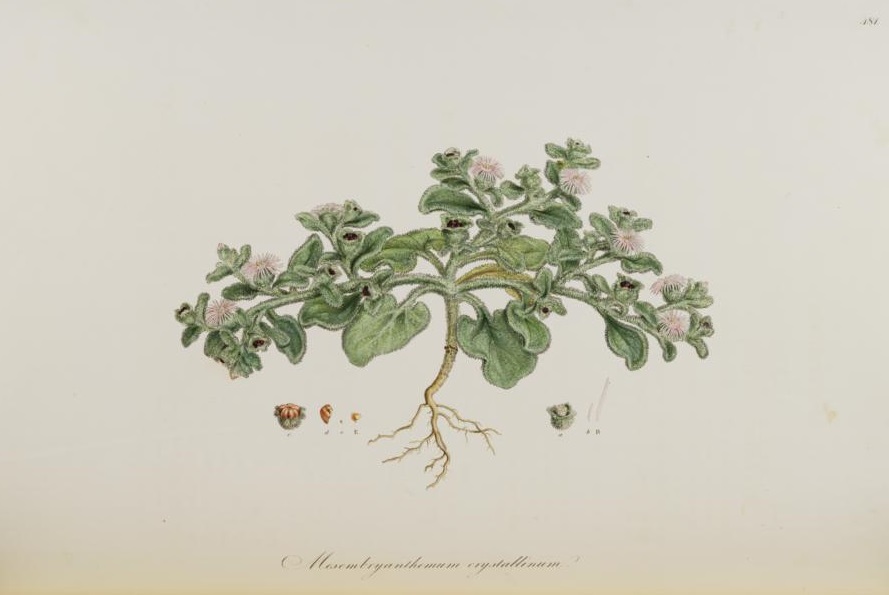! Nouveau site ici !
Vita > Plantae > Magnoliophyta > Magnoliopsida > Caryophyllales >
Aizoaceae > Mesembryanthemum
Mesembryanthemum crystallinum
(Ficoïde glaciale)


 | *** - *
| *** - *
Vita > Plantae > Magnoliophyta > Magnoliopsida > Caryophyllales >
Aizoaceae > Mesembryanthemum
Mesembryanthemum crystallinum
(Ficoïde glaciale)

Une herbe ou un arbuste succulent. Il se trouve sur le sol. Il pousse de 10 à 20 cm de haut. Il peut s'étendre jusqu'à 1 m de large. Les tiges sont robustes. Les feuilles sont ovales ou en forme de cœur et ... (traduction automatique)
→suite
⬀
Le  donne accès au menu
donne accès au menu (c'est votre point de repère) 😊 ;
En dessous vous avez la classification, à partir de la vie (Vita, premier rang) jusqu'à la classe au dessus de la plante, dont vous trouvez ensuite le nom scientifique/botanique (latin) puis le nom commun (français), le cas échéant ;
C'est aussi un lien vers la fiche complète (tout comme la ✖, en bas à droite, et le +, en dessous de la description) ;
Vient alors l'illustration (ou ce qui la remplace, en attendant), la comestibilité :
Et en bas
⬂





